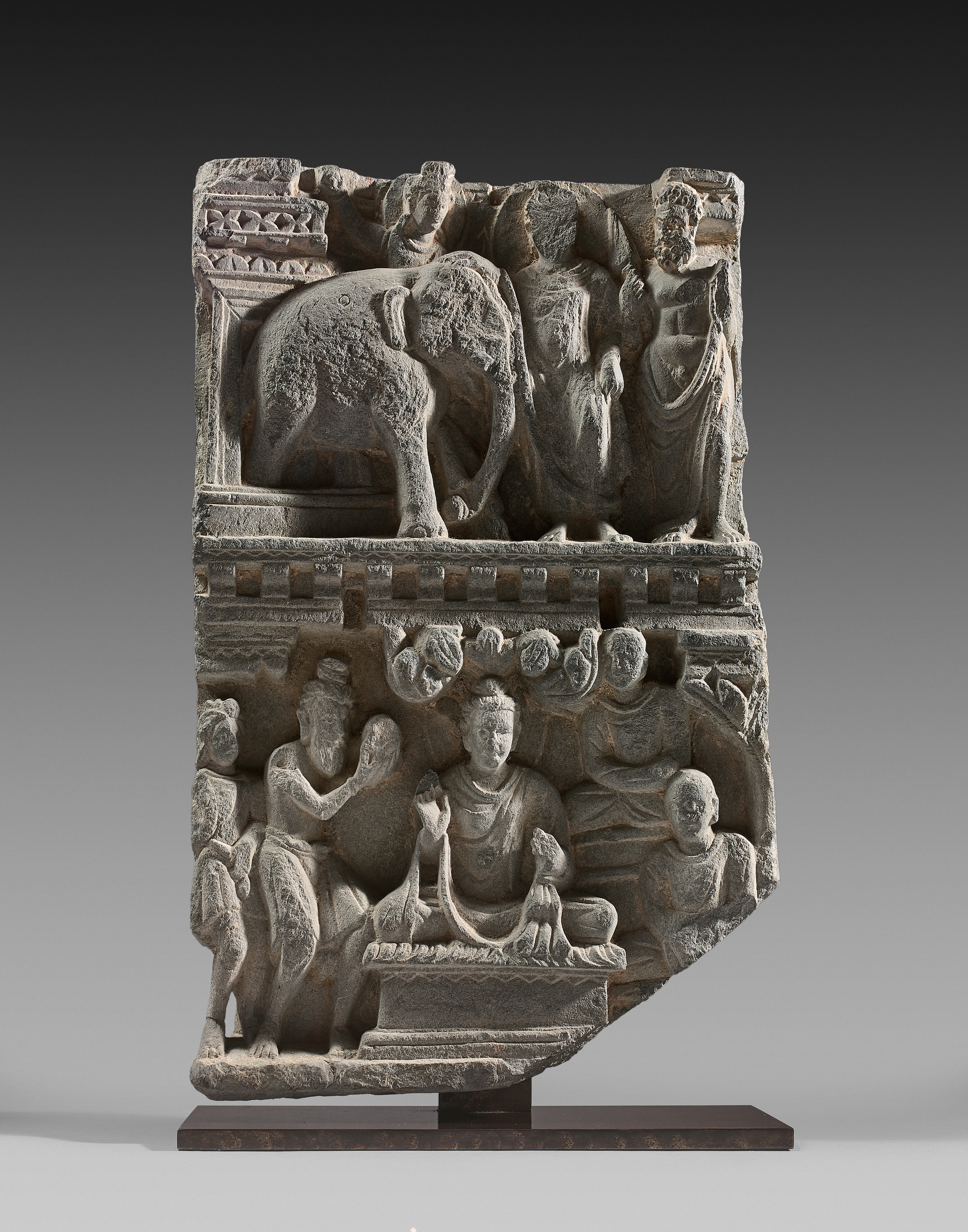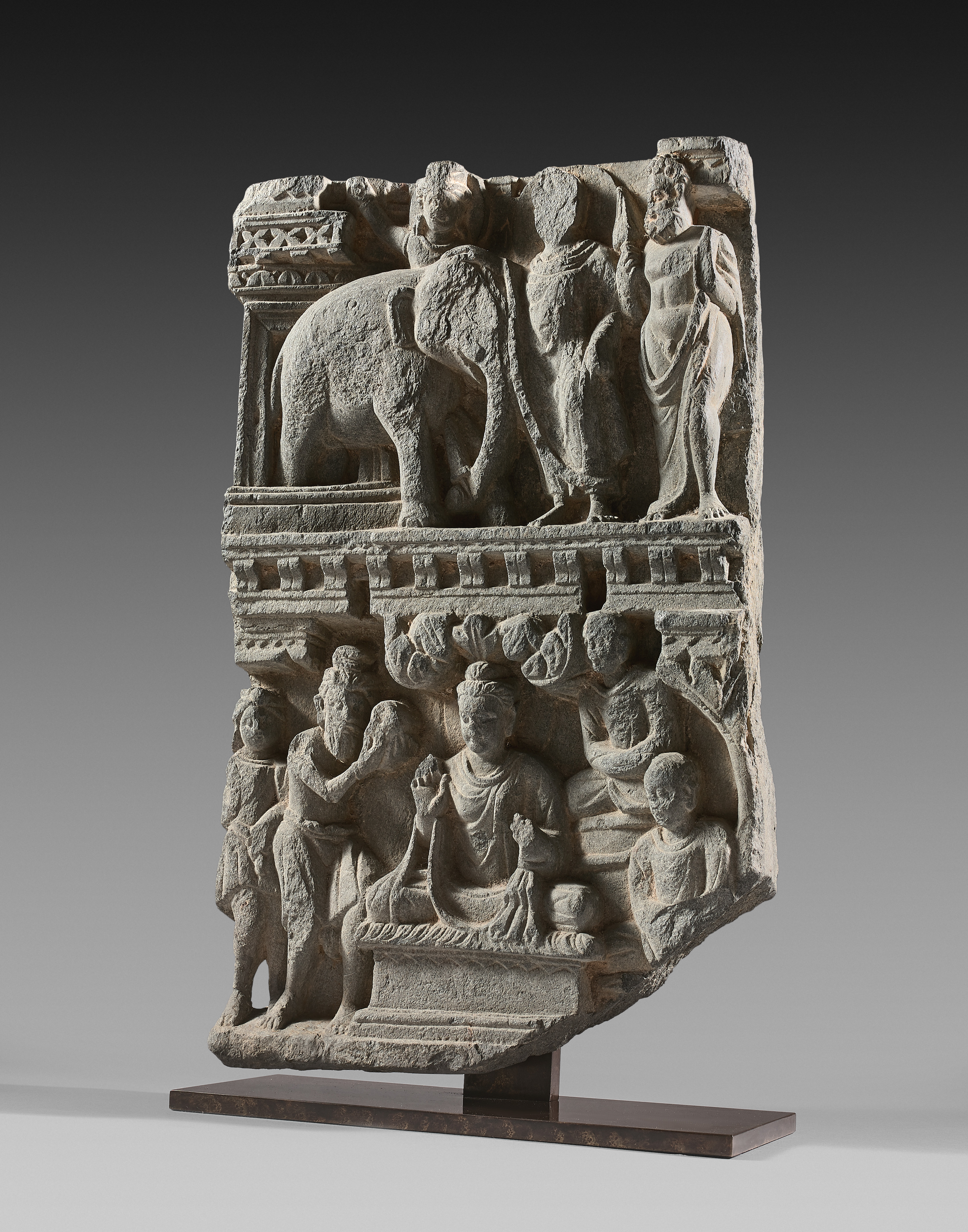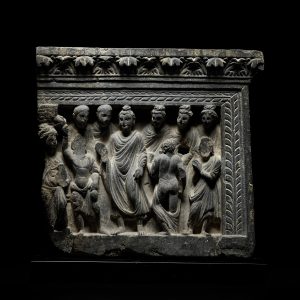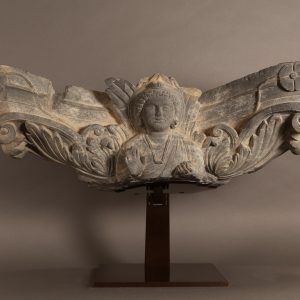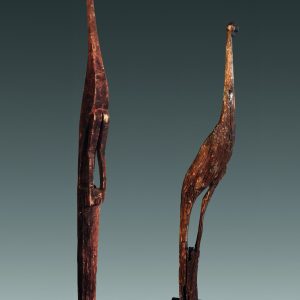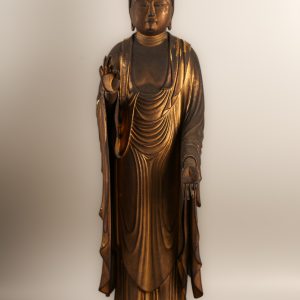Gandhāra stele
Schist
Ancient region of Gandhāra (Northern Pakistan)
3rd – 4th century
H. 39 cm or 15 ¼ in
Description
Superb Gandhāra stele classically carved in schist, this piece can be dated from the 3rd – 4th centuries. Perfectly balanced and readable, this stele depicts two scenes from the life of Śākyamuni Buddha. The lower register represents one of the many preaches’ episodes of the Blessed One, gathering here four listeners: two disciples are sitting, lost in deep meditation, their hands resting in their lap, while on the other side an ascetic is standing, wearing the characteristic bun and the long beard. Behind him, a devotee accompanies him. All worship the Buddha whose face is really nice and who is figured sitting on a pedestal, the raised right hand making the “no fear” gesture (abhaya mudrā).
The upper register represents the famous episode in which Śākyamuni Buddha tames the royal elephant Nalagiri, who was made furious by Devadatta, a jealous cousin. It is said that Devadatta wanted to assassinate the Buddha in order to lead the Buddhist community instead of him. On the right, beautifully preserved, Vajrāpani – the Bearer of Vajra – is depicted as a superb mature Heracles, with curly hair and beard, and with sunken eyes in the tradition of the Greek sculptor Scopas.
This Buddhist relief is part of a very accomplished production. Various styles blend harmoniously. Architectural elements, draperies, musculatures alongside with the iconography, all merge together to create this original art, formerly called “Greco-Buddhist art”. We admire the influence of Greek art with the very beautiful figure of Vajrāpani, but also the subtle draperies sometimes treated with a certain graphic style similar to that of Parthian sculptures. Furthermore, there is a variety of geometric patterns on the architectural parts and on the Western-inspired decorative plinth.
Provenance: Private collection, France.

